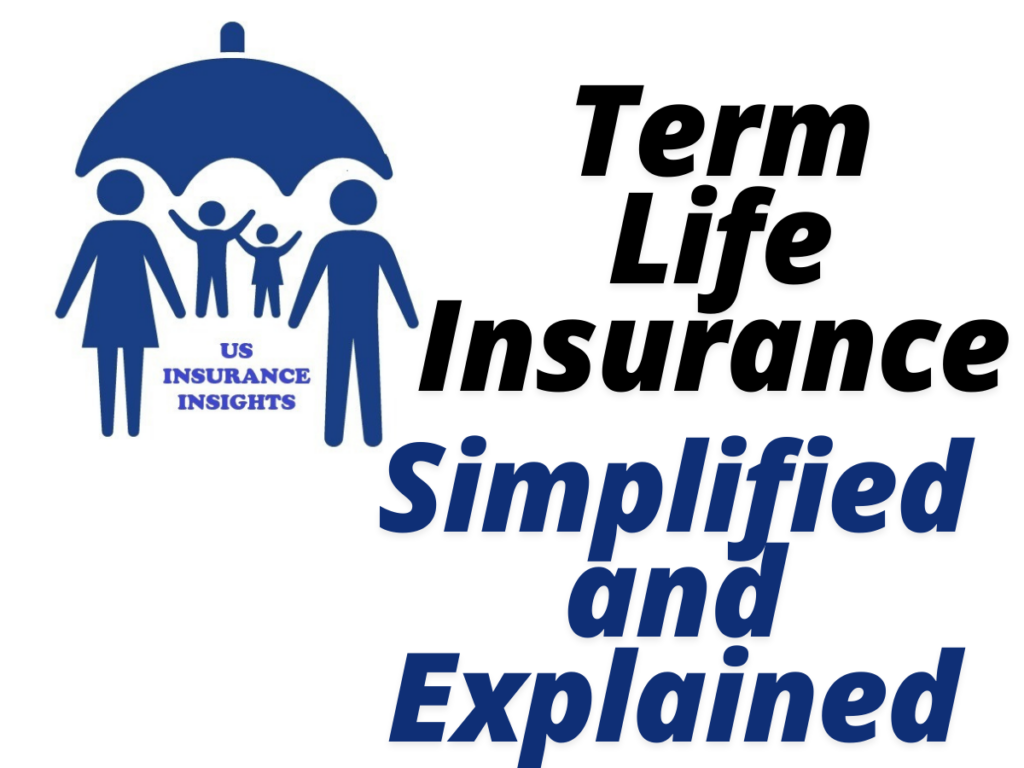Term Life Insurance Simplified When planning for your family’s financial future, term and life insurance are often at the forefront of the conversation. Both types of insurance serve as powerful tools to provide peace of mind and financial protection, but understanding their differences and benefits can feel overwhelming. This guide will break down the essentials of term and life insurance in simple terms, ensuring you make an informed decision for yourself and your loved ones.
What Are Term and Life Insurance?
Term life insurance is a policy that provides financial protection for a set period, such as 10, 20, or 30 years. If the policyholder passes away during the term, the insurer pays a death benefit to the beneficiaries. However, once the term expires, the coverage ends unless the policy is renewed or converted. Term Life Insurance Simplified
Life insurance, also referred to as permanent life insurance, includes policies like whole life or universal life insurance. These policies provide lifelong coverage and often include a cash value component that grows over time.
Understanding these basic definitions can help you determine which type of insurance aligns with your needs.
Term Life Insurance Simplified
Term Life Insurance:
Affordable Premiums: Term life insurance premiums are typically lower than those of permanent policies, making it a cost-effective option. Term Life Insurance Simplified
Fixed Duration: Coverage lasts for a specific period, such as 10, 20, or 30 years. Term Life Insurance Simplified
No Cash Value: These policies focus solely on providing a death benefit, without any savings or investment features.
Life Insurance (Permanent):
Lifelong Coverage: As long as premiums are paid, coverage remains in place for life. Term Life Insurance Simplified
Cash Value: A portion of your premiums contributes to a cash value account, which grows over time and can be borrowed against. Term Life Insurance Simplified
Higher Premiums: The additional benefits of permanent policies make them more expensive than term policies.
Who Should Choose Term Life Insurance?
Term life insurance is ideal for those seeking temporary coverage to meet specific financial obligations. Here’s a closer look at who might benefit most: Term Life Insurance Simplified
Young Families
If you’re raising children, a term life insurance policy can provide financial security during their formative years. The death benefit can help cover expenses like education, childcare, and daily living costs.
Homeowners
A term policy can align with the length of your mortgage, ensuring your family can pay off the loan if you’re no longer there to support them.
Individuals on a Budget
Since term policies are more affordable, they’re a great option for those who want significant coverage without breaking the bank. Term Life Insurance Simplified
Who Should Choose Life Insurance (Permanent)?
Permanent life insurance is better suited for those looking for lifelong protection and additional financial benefits. Here’s who it’s best for:
Wealth Builders
The cash value component can serve as a long-term savings tool, providing funds that can be borrowed or withdrawn.
Estate Planners
Permanent policies are often used in estate planning to cover taxes, ensuring more of your assets are passed on to your heirs.
High Earners
If you’ve maximized other investment opportunities, a whole life or universal life policy can provide additional financial growth.
Comparing Costs: Term Life Insurance Simplified
A common question is, “Which is more affordable?” Let’s break it down:
Term Life Insurance
Lower premiums make it an accessible option for most budgets.
Example: A 30-year-old non-smoker might pay $25 per month for a 20-year, $500,000 policy. Term Life Insurance Simplified
Permanent Life Insurance
Higher premiums reflect the lifelong coverage and cash value benefits.
Example: The same individual might pay $300 per month for a whole life policy with a similar death benefit.
While permanent policies may seem expensive, their additional features can provide long-term value.
Real-Life Stories: Why Insurance Matters
Case 1: The Young Family Term Life Insurance Simplified
Mark and Lisa, both in their early 30s, recently bought a home and welcomed their first child. They opted for a 30-year term life insurance policy to ensure their mortgage would be paid off and their child’s future secured if anything happened to them. This decision gave them peace of mind without straining their budget.
Case 2: The Business Owner
Sandra, a successful entrepreneur, chose a whole life insurance policy to protect her business and leave a legacy for her children. The policy’s cash value also served as an emergency fund during a challenging financial period.
These examples highlight how term and life insurance can address different needs and stages of life.
How to Choose the Right Policy
Step 1: Assess Your Needs Term Life Insurance Simplified
Determine your financial goals and responsibilities. Ask yourself:
Do I need coverage for a specific period or my entire life?
How much can I afford to spend on premiums?
Do I want a policy that builds cash value?
Step 2: Compare Policies Term Life Insurance Simplified
Research and compare options from different providers. Consider:
Premium costs
Coverage amounts
Additional features, like riders
Step 3: Consult an Expert Term Life Insurance Simplified
Insurance agents or financial advisors can help tailor a policy to your unique needs. Don’t hesitate to ask questions and seek clarification.
Common Myths About Term and Life Insurance
Myth 1: “I’m Too Young to Need Insurance.” Term Life Insurance Simplified
The earlier you buy insurance, the lower your premiums will be. Waiting can make coverage more expensive.
Myth 2: “I Don’t Need Life Insurance Without Dependents.”
Even without dependents, life insurance can cover debts, final expenses, and leave a legacy.
Myth 3: “Term Insurance Is a Waste If I Outlive the Term.” Term Life Insurance Simplified
While you may not receive a payout, the financial security during the term can outweigh the cost of premiums.
Final Thoughts: Making the Right Choice
Whether you choose term life insurance for its affordability and simplicity or permanent life insurance for its lifelong benefits, both options play a crucial role in financial planning. Understanding the term and life insurance landscape empowers you to make a choice that aligns with your goals and provides peace of mind for you and your loved ones.
Take the first step today by exploring policies and consulting with an expert. Remember, the right insurance isn’t just about protection—it’s about building a secure and confident future.

